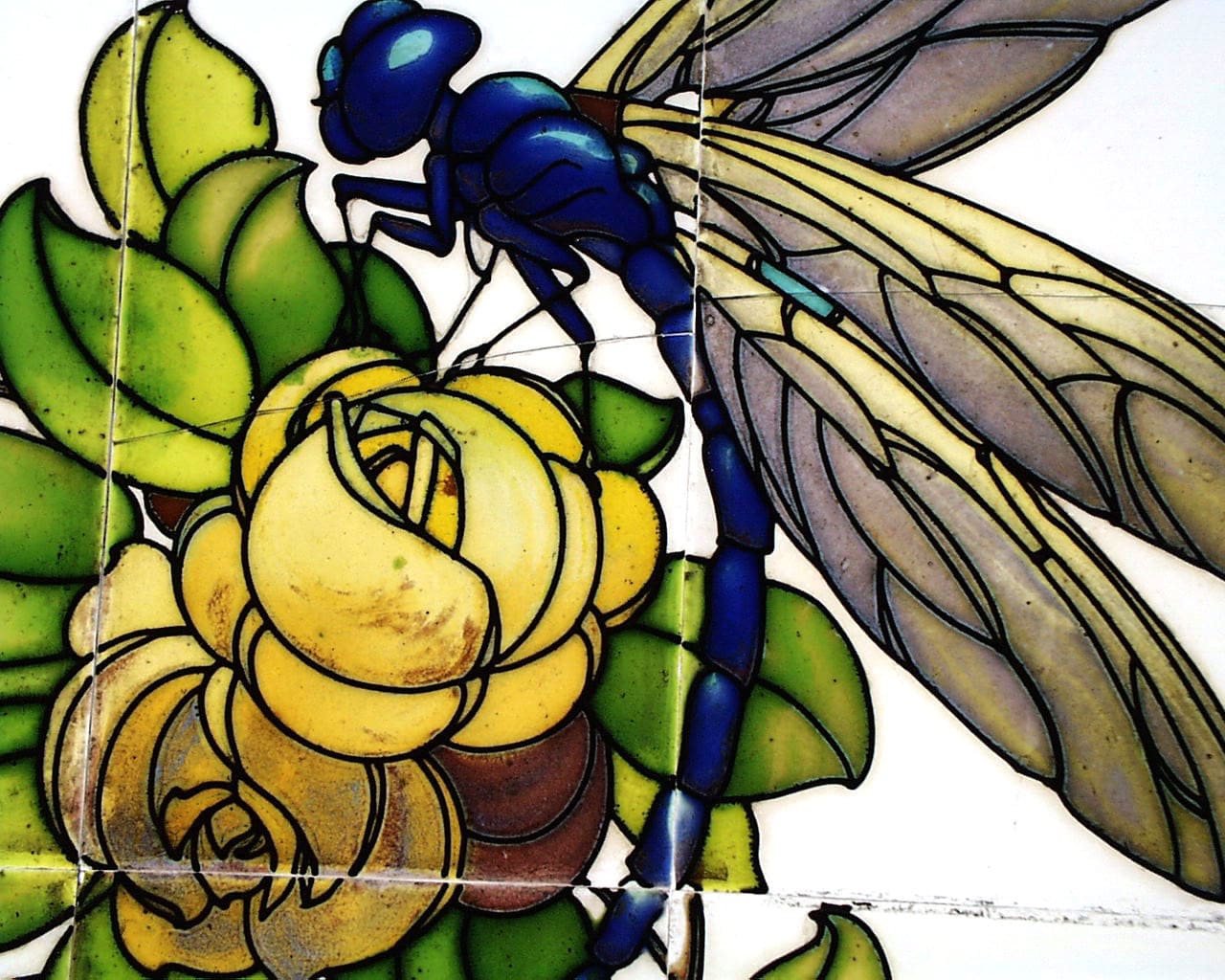
13 Jun TUBAGE: A TECHNIQUE LOST IN TIME AND RETRIEVED
‘It’s the first time I see this type of processing’ I lingered among myself to observe, with content astonishment, the glass émail tubé of a door of an art nouveau villa. It was the mid-eighties, and I was in the immediate outskirts of Treviso.
Then, the property showed me the damage. The window had several rectangles decorated and then tied together with lead but it was partially broken. In the moment of silence that followed the immediate evaluation of the difficulty of the task of restoration that was requested, I realized that this technique of processing really represented a novelty for me; and this although not fasting of enamels baked in the oven and grit cords, which were already long time part of my tool case of the craft of master glassmaker.
The property was hanging on my lips to know if I would be able to intervene on the glass.
‘I need some time’ I thought and left with two pieces of glass from that temporarily defaced work to start my research.
A LOST TECHNIQUE
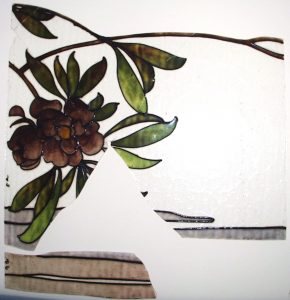
Vetrata danneggiata e ripristinata nei primi anni Novanta – Glass damaged and restored in the early nineties
The émail tubé, or tubage, was a French technique of the past from which admirable examples survived but whose secrets of processing seemed to have been definitively lost.
I knew that it had been developed to avoid the costs of making the windows and that consisted in painting with a paste, extruded by a syringe like pastry, which bordered the forms in which the transparent enamel was applied and then included baking. In Italy, the firm Corvaja e Bazzi of Milan was the main producer.
In addition to the immediate search for information, I went to Ottavio Furlanetto and Luciano Toniolo, two friends. They had the experience of cooking glazes for ceramics and glass, so they could know more. And so it was.
“It would appear to be a fragment of a glass in émeil tubé,” said Ottavio.
“Recognize them, yes, but do them…” hurried to add Luciano.
In fact, I knew right away that none of them had ever done one.
“Your problem is finding the materials,” said Ottavio.
The original components, with which these windows were created in the early twentieth century, had been, in fact, mostly removed from the market because of their high environmental impact during cooking and their high toxicity.
‘It would need something that can replace them. But what…’ I thought.
“You have to start rehearsing,” they said before saying goodbye.
I went immediately to the lab. I started working but time was tight, and I knew I didn’t have much. I also tried to find a system of applying the cord in relief that would allow me to contain the enamels inside it. After days and days of experiments and research I was forced to give up the task of restoring the glass. I needed more time to do a job that met my expectations.
A GLASS THAT TAKES YOUR BREATH
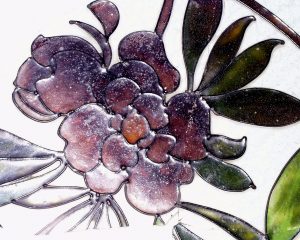
Dettaglio della vetrata con rose rampicanti – Detail of the window with climbing roses
The years passed and there were not too many when, in the early nineties, a new opportunity was presented to me.
I went out for a relief in another Art Nouveau villa in Treviso and the request was to restore another artistic stained glass.
When I found myself in front of that work of art, I had a dip in the heart. The window occupied, in height, all the stairway and was wonderfully worked in émeil tubé with climbing roses, amphoras, peacocks and indigo colored skies. In three points, however, it was damaged: there were broken or missing glass.
“A masterpiece of the turn of the century” he whispered.
Doubts about the chances of success immediately popped in my mind but I was able to escape their influence and accepted the assignment. I would have finished it no matter what.
When I returned to the laboratory, I started looking for the materials: enamels, colours, grisaille, oxides, grays, medium and melts. I relied on Johnson&Matthey for the supply of components and started testing.
Three months later, I was able to bring to light those three pieces of glass that could have given the window a new shine. We installed them and the customer was satisfied but, for me, something was still missing.
The materials chosen, the finishes achieved and the possibility of reproducing the pieces did not convince me completely.
THE OVERLIGHT
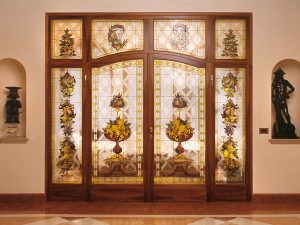
Vetrata realizzata a émeil tubé nei primi anni Duemila – Glazed glass made in émeil tubé in the early years of 2000
Time later, a new chance to try knocked on my door.
An architect contacted me, at the end of the nineties, asking me to make a glass partition with wooden structure for his villa in Veneto. In fact, she herself drew the colour subjects of the full-size window, the so-called cartons.
‘This is a new opportunity for the new-old technique’ I thought when I saw them.
“We will be happy to make them!” I replied without delay.
At my side I could count on the collaboration of Sabrina Bianco, painter and irreplaceable artist.
We started the colour tests to get as close as possible to the subject drawn and painted by the client. It took days and days to test the colours, shades and mixes. Two months later, the samples were under the critical eye of the owner-architect who approved them.
We went to the stage of construction of the four overlights that made up the upper part of the partition structure. The spring of 2001 had just begun.
“Vittorio, the oxide is finished,” they told me one day from the laboratory.
Without too much thought I rushed to reorder it to continue the work but, when it arrived, we realized that the new supply of metal oxide, which was used to contain the enamel, was completely different from the previous one in use.
We had to stop and it took three months of exhausting research before finding an oxide in the form most suitable for continuing.
In January 2002, after the various stages of firing the grit and enamels and binding the pieces, we completed the contract.
Today, the extreme difficulty of painting and checking the cooking as well as the impossibility to find the pictorial material make it increasingly difficult the chemical composition of the paste used to produce the émail tubé.
Our laboratory conducts several trials to keep this technique as much as possible alive.
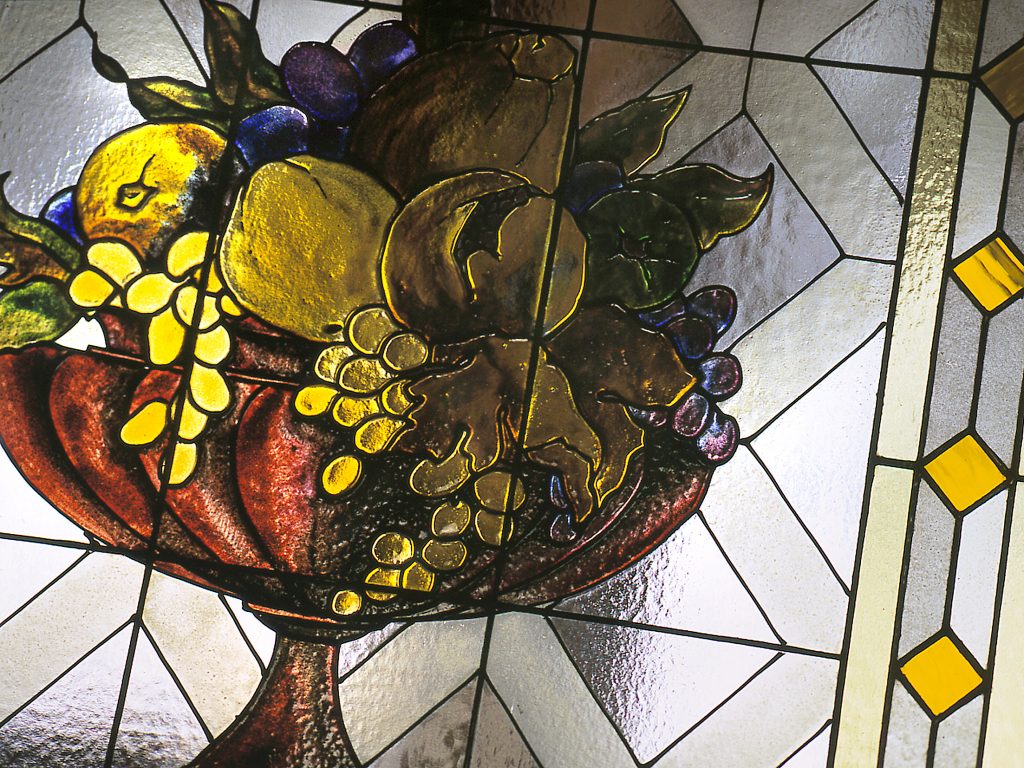
“Anyone interested in a cultural exchange on the subject can do so by contacting me. It would be a pity if this form of art and craft were lost without any other chance of recovery.”
Vittorio Benvenuto